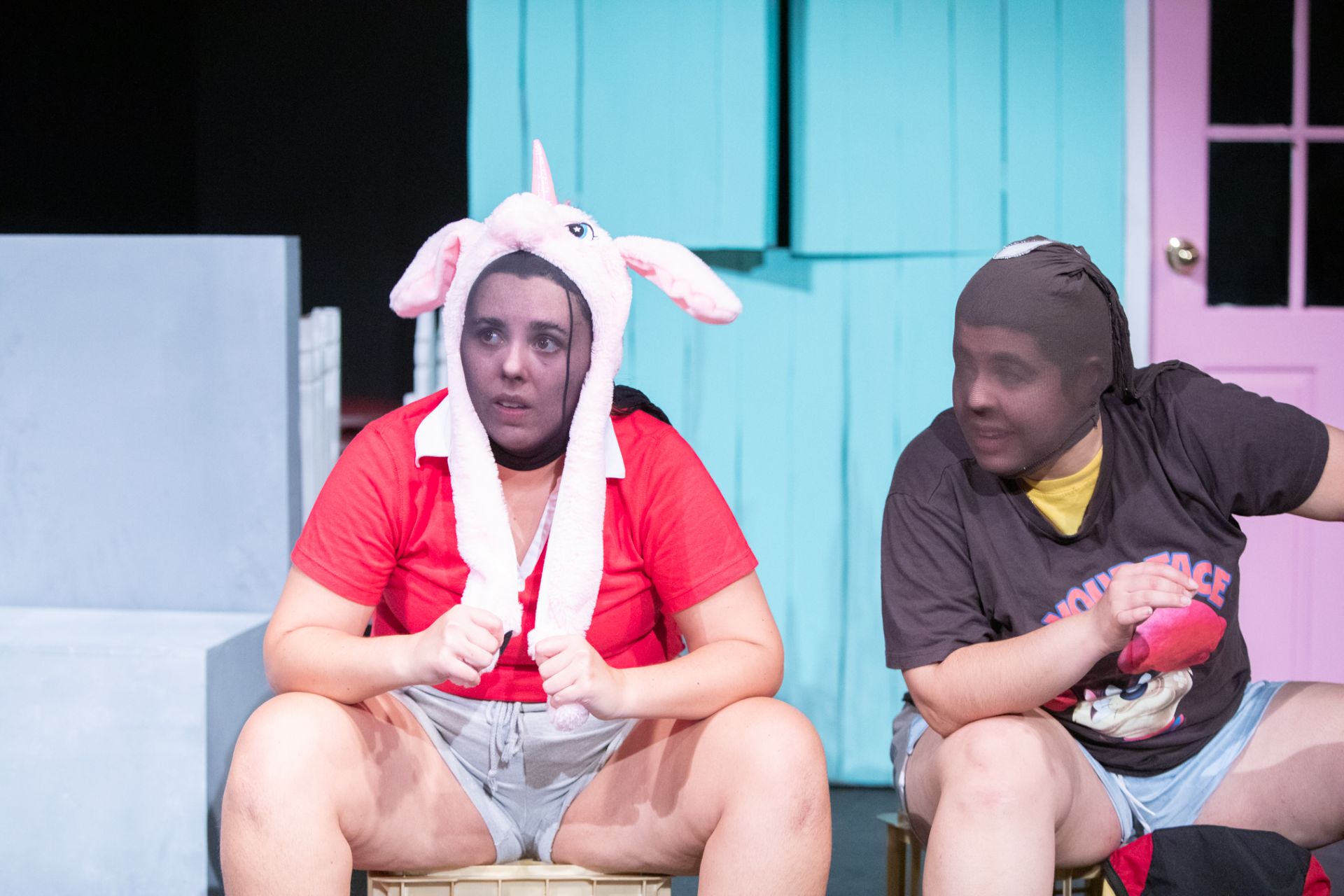









Venue: Old Fitzroy Theatre (Woolloomooloo NSW), Feb 24 – Mar 26, 2022
Playwright: Robert Askins
Director: Alexander Berlage
Cast: Gerard Carroll, Merridy Eastman, Philip Lynch, Ryan Morgan, Michelle Ny
Images by Robert Catto
Theatre review
Recently widowed Margery is trying to get her life back together, but it seems her new responsibilities at church, of trying to teach puppetry to young teens, are working out very poorly. Her son Jason especially, is reacting in unimaginably terrifying ways, with his malicious puppet Tyrone seeming to take on a life of its own, to terrorise all and sundry. Robert Askins’ Hand to God toys with ideas around supernatural possession and dissociative disorders, but its greatest concern is trauma, a subject matter that the theatrical arts seem particularly adept at tackling.
Both Margery and Jason act out in highly unedifying ways. In Hand to God, the profane is conveyed through outrageous absurdist comedy. The entertainment that all the jubilant laughter provides, is a guise for valuable observations pertaining to loss, and the destructive behaviour that often ensues in its aftermath.
Director Alexander Berlage uses Askins’ extravagant material to create a work of immense vivacity. It is a very heightened type of theatre, that allows for the most flamboyant flourishes, but Berlage’s insistence on nuance and authenticity, ensures that the wild humour is always partnered with meaningful insight.
Set design by Jeremy Allen and Emma White is replete with sarcasm, in its depictions of religion and superstition, and also remarkable for its transformation of space, effective in providing the sensation of being immersed in parochial Americanness. Lights by Phoebe Pilcher, along with Daniel Herten’s sound design, are relied upon for sensory magnifications for the jokey paranormality, that forms the basis of the play’s pleasures.
Merridy Eastman brings great compassion to the part of Margery, thereby encouraging us to respond similarly. Eastman, like all of the cast, delivers a very funny performance, but it is her subtle renderings in between the comedy, that reveal the beautiful emotional truths behind all the manic manifestations. As the disturbed Jason, Philip Lynch demonstrates incredible skill in splitting mind and body between two vastly different personalities; his work is a fascinating and impressive thing to behold.
The enchanting Michelle Ny offers a critical dimension of purity to the story, even though her most memorable scene as Jessica, is anything but innocent. Ryan Morgan has the happy task of playing the entirely comedic part of Timothy, and is flawless with his bold choices, responsible for creating some of the show’s biggest laughs. Gerard Carroll’s wonderfully satirical take on Pastor Greg too, is hilarious, as he mocks the heart-breaking incapacity and voidness of religion.
So much happens during one’s formative years, but nothing can ever be done, to completely shield a young person from the ravages of life. There are however ways to steer for better outcomes when damage occurs; not everything can be resolved, but processes are always available, to try for improvements. The postscript of Hand to God is surely about healing, or a lifetime of navigating the inevitable hazards of existence. No matter how late one comes to acknowledging these scars, it must be in the essence of our humanity, to want to work towards something better, whether or not there is the possibility of comprehensive rehabilitation. Change is hard, but stagnation may as well be death.



















































































































